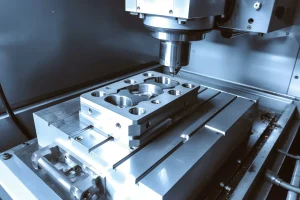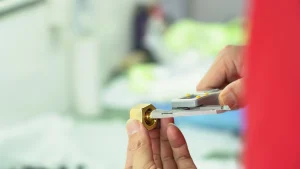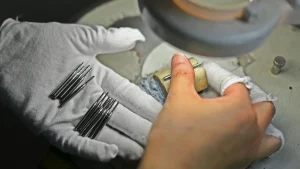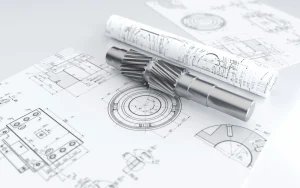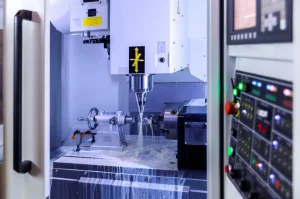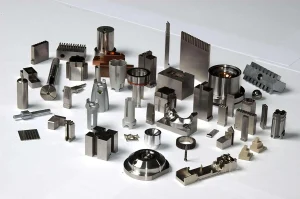Introduction
In modern manufacturing, the CNC machining process has become an indispensable part. It has revolutionized the way products are made, offering high precision, repeatability, and the ability to handle complex geometries. With the increasing demand for high – quality products in various industries such as aerospace, automotive, and electronics, the efficiency and productivity of the CNC machining process have become crucial factors for manufacturers to stay competitive.
This article will focus on how to improve the productivity of the CNC machining process. By exploring various aspects such as optimizing programming, choosing the right tools, and effective machine maintenance, we aim to provide valuable insights and practical tips for both novice and experienced CNC operators and manufacturers. Whether you are a small – scale workshop or a large – scale manufacturing enterprise, these strategies can help you make the most of your CNC machines and achieve higher productivity levels.
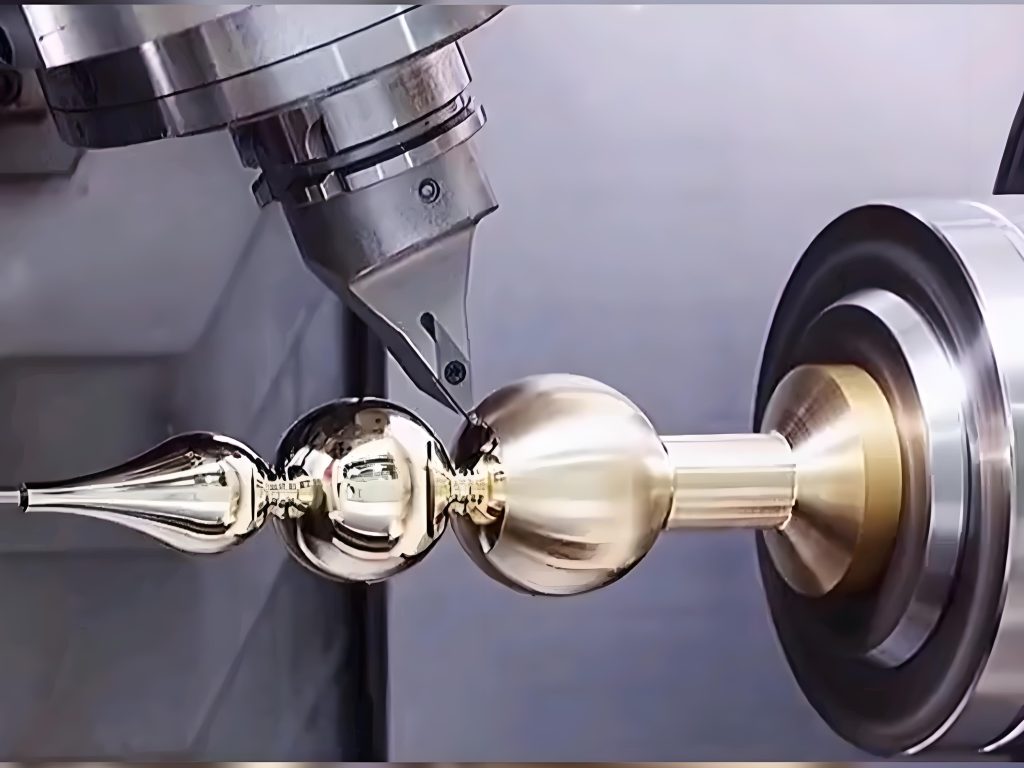
Understanding the CNC Machining Process
Basics of CNC Machining
CNC machining, short for Computer Numerical Control machining, is a manufacturing process in which pre-programmed computer software dictates the movement of factory tools and machinery. This process can be used to control a range of complex machinery, from grinders and lathes to mills and routers.
The fundamental principle behind CNC machining lies in the conversion of design data into a series of numerical commands. These commands are then fed into the CNC machine’s control system. For example, when a product design is created using Computer – Aided Design (CAD) software, the geometric data of the design is translated into a language that the CNC machine can understand, typically G – code. This code precisely defines the movement of the cutting tools, spindle speeds, feed rates, and other crucial parameters during the machining process. This allows for highly accurate and repeatable manufacturing operations, regardless of the complexity of the design.
Key Components and Their Functions
- Machine Tool: This is the physical structure on which the machining operations take place. It provides the mechanical support and movement capabilities for the cutting tools and the workpiece. For instance, a CNC milling machine has a table where the workpiece is mounted, and the spindle, which holds the cutting tool, can move in multiple axes (usually X, Y, and Z) to perform milling operations. The rigidity and stability of the machine tool are crucial for achieving high – precision machining. A well – built machine tool can minimize vibrations during operation, which is essential for producing smooth surfaces and accurate dimensions.
- Control System: The control system is the “brain” of the CNC machine. It interprets the G – code and other commands from the computer and sends signals to the machine’s motors and other actuators to control their movement. Modern CNC control systems often come with advanced features such as real – time monitoring, error detection, and compensation for tool wear. For example, if the control system detects that the cutting tool is wearing out, it can automatically adjust the cutting parameters to maintain the desired quality of the machined part.
- Cutting Tools: These are the implements used to remove material from the workpiece. There are various types of cutting tools, each designed for specific machining operations. End mills are commonly used for milling operations, drills are used for creating holes, and lathe tools are used for turning operations. The choice of cutting tool depends on factors such as the material of the workpiece, the type of machining operation, and the desired surface finish. High – quality cutting tools with the right geometry and material properties can significantly improve the efficiency and quality of the machining process. For example, carbide – tipped cutting tools are often preferred for machining hard materials due to their high hardness and wear resistance.
- Workholding Devices: These are used to secure the workpiece firmly in place during machining. Examples include vises, clamps, and chucks. Proper workholding is essential to prevent the workpiece from moving during machining, which could lead to inaccurate dimensions and poor surface quality. Workholding devices need to be carefully selected and installed to ensure that they can withstand the forces exerted during machining while maintaining the workpiece’s position accurately.
General Workflow of CNC Machining
- Design Phase: The process begins with the creation of a 3D model of the product using CAD software. Designers can create complex geometries and precise dimensions in this virtual environment. For example, in the aerospace industry, the design of a turbine blade using CAD software allows engineers to optimize its aerodynamic performance and structural integrity before any physical manufacturing takes place.
- CAM Programming: The CAD model is then imported into Computer – Aided Manufacturing (CAM) software. CAM software generates the G – code, which is a set of instructions that tells the CNC machine how to move the cutting tools, what spindle speeds to use, and how much material to remove at each step. This process involves defining the machining operations, such as milling, turning, or drilling, and setting the appropriate parameters for each operation.
- Machine Setup: Before starting the machining process, the CNC machine needs to be set up. This includes installing the appropriate cutting tools in the spindle, securing the workpiece in the workholding device, and calibrating the machine’s axes. The operator also needs to load the G – code into the machine’s control system and check the settings to ensure they are correct.
- Machining Execution: Once the setup is complete, the CNC machine starts executing the machining operations according to the G – code. The machine moves the cutting tools precisely, removing material from the workpiece to create the desired shape. During this process, the machine’s control system monitors the operation, and if any issues are detected, such as tool breakage or excessive vibration, it can pause or stop the process.
- Quality Inspection: After the machining is finished, the workpiece undergoes a quality inspection. This can involve measuring the dimensions of the part using precision measuring instruments such as calipers, micrometers, and coordinate measuring machines (CMMs). The surface finish of the part is also inspected to ensure it meets the required standards. If any defects or deviations from the design specifications are found, the part may need to be re – machined or scrapped.
- Finishing Operations: In some cases, the machined part may require additional finishing operations, such as polishing, deburring, or coating. These operations are carried out to improve the appearance, functionality, and durability of the final product. For example, a medical implant made through CNC machining may need to be polished to a high – gloss finish to ensure biocompatibility and prevent the accumulation of bacteria.
Factors Affecting Productivity in CNC Machining
Machine – related Factors
Machine Quality and Maintenance
The quality of a CNC machine is the foundation for high – productivity machining. High – quality CNC machines are built with better – quality components, such as high – precision linear guides, reliable servo motors, and rigid machine structures. These components enable the machine to achieve higher positioning accuracy, faster feed rates, and better stability during operation. For example, a CNC machine with high – quality linear guides can move the axes smoothly, reducing friction and wear, which in turn allows for more accurate machining and longer – term reliable operation.
Regular maintenance is equally important. Routine maintenance tasks, including lubricating moving parts, checking and replacing worn – out components, and calibrating the machine’s axes, can keep the CNC machine in optimal working condition. Lubrication reduces friction between moving parts, preventing overheating and premature wear. For instance, if the ball screws in a CNC machine are not properly lubricated, they may experience increased friction, leading to reduced feed accuracy and potential damage to the screws and the servo motors that drive them. Regular calibration of the machine’s axes ensures that the machine moves precisely according to the programmed commands. Without calibration, the machine may deviate from the intended path, resulting in inaccurate parts and increased scrap rates.
Machine Upgrade and Retrofit
Upgrading or retrofitting an old CNC machine can be a cost – effective way to improve productivity. One common upgrade is to replace the old control system with a more advanced one. Newer control systems often come with features such as faster processing speeds, more user – friendly interfaces, and advanced motion control algorithms. For example, a modern control system can execute complex G – code programs more quickly, reducing the overall processing time. It may also offer real – time monitoring and self – diagnostic functions, which can help operators identify and resolve issues promptly, minimizing machine downtime.
Another aspect of machine retrofit is improving the mechanical components. Upgrading the spindle to a higher – speed or higher – torque version can expand the range of materials and operations that the machine can handle. For example, a high – speed spindle allows for faster cutting speeds when machining soft materials like aluminum, increasing the material removal rate and thus productivity. Additionally, retrofitting the machine with automated tool – changing systems can significantly reduce tool – change times. In a production environment where multiple operations are performed with different tools, reducing tool – change time can lead to a substantial increase in overall productivity.
Programming – related Factors
Quality of CNC Programming
High – quality CNC programming is crucial for optimizing the machining process and reducing processing time. Well – written G – code can ensure that the cutting tools move along the most efficient paths, minimizing unnecessary movements and reducing air – cutting time (the time when the tool is moving without cutting material). For example, in a milling operation, a skilled programmer can plan the toolpath in such a way that it takes the shortest route between different cutting positions, avoiding zig – zag or redundant movements. This not only saves time but also reduces wear on the cutting tools and the machine’s moving parts.
Moreover, proper programming also involves setting the correct machining parameters, such as spindle speed, feed rate, and cutting depth. These parameters need to be carefully selected based on the material of the workpiece, the type of cutting tool, and the desired surface finish. Incorrect parameter settings can lead to issues such as tool breakage, poor surface quality, and slow machining speeds. For instance, if the feed rate is set too high for a particular cutting tool and workpiece material combination, the tool may experience excessive stress and break, while a feed rate that is too low will result in inefficient machining and longer processing times.
Use of Advanced Programming Techniques
Advanced programming techniques can further enhance the productivity of CNC machining. High – speed machining (HSM) programming is one such technique. HSM involves using high spindle speeds and high feed rates while keeping the cutting depth relatively small. To program for HSM, special algorithms are used to create smooth and continuous toolpaths. This not only allows for faster material removal but also helps to maintain the integrity of the cutting tool and the quality of the machined surface. For example, in the aerospace industry, where lightweight components with complex geometries are often made from high – strength alloys, HSM programming enables the efficient machining of these parts, reducing production time without sacrificing quality.
Five – axis programming is another advanced technique. In a five – axis machining process, the workpiece or the cutting tool can move in five different axes simultaneously (usually three linear axes – X, Y, Z, and two rotational axes). This allows for the machining of complex 3D geometries in a single setup. With five – axis programming, the programmer can create toolpaths that access all sides of the workpiece, eliminating the need for multiple setups and reducing the overall machining time. For example, when machining a turbine blade, a five – axis CNC machine programmed with five – axis techniques can precisely shape the complex airfoil surfaces and the root of the blade in one operation, which would otherwise require multiple setups on a less – advanced machine.
Tooling – related Factors
Selection of Appropriate Tools
Choosing the right cutting tools is essential for efficient CNC machining. Different materials and machining operations require different types of tools. For example, when machining hardened steel, carbide – tipped cutting tools are often preferred due to their high hardness and wear resistance. Carbide tools can withstand the high cutting forces and temperatures generated during the machining of hard materials, allowing for higher cutting speeds and longer tool life compared to high – speed steel tools.
The geometry of the cutting tool also plays a crucial role. For instance, in milling operations, end mills with different numbers of flutes and helix angles are available. A two – flute end mill is suitable for roughing operations as it can remove a large amount of material quickly, while a four – flute end mill is better for finishing operations, providing a smoother surface finish. The helix angle of the end mill affects the cutting action. A high – helix – angle end mill is more effective for machining soft materials as it can cut more smoothly, reducing the likelihood of chip – packing and surface defects.
Tool Life and Replacement Strategy
The life of a cutting tool directly impacts productivity. A tool that wears out quickly needs to be replaced frequently, which leads to increased downtime and higher tool costs. Tool wear is affected by factors such as cutting speed, feed rate, cutting depth, and the material being machined. For example, increasing the cutting speed will generally increase the rate of tool wear. Therefore, finding the right balance between machining speed and tool life is crucial.
A well – planned tool replacement strategy is also necessary. Some manufacturers use a time – based replacement strategy, where tools are replaced after a certain number of machining hours. However, this may not be the most efficient method as tool wear can vary depending on the actual machining conditions. A more advanced approach is to monitor the tool’s condition in real – time using sensors. These sensors can detect factors such as tool vibration, cutting force, and temperature, which are indicators of tool wear. When the sensor data indicates that the tool is approaching the end of its useful life, the tool can be replaced proactively, minimizing the risk of tool breakage during machining and reducing unplanned downtime.
Material – related Factors
Material Properties and Machinability
The properties of the material being machined have a significant impact on the CNC machining process. Machinability refers to how easily a material can be machined. Materials with good machinability are easier to cut, require less cutting force, and produce better – quality surfaces. For example, aluminum is a material with excellent machinability. It has a relatively low hardness, which allows for high cutting speeds and feeds. When machining aluminum, the cutting tools can remove material quickly without excessive wear, resulting in high – productivity machining.
On the other hand, materials with poor machinability, such as some high – nickel alloys used in the aerospace industry, pose challenges. These materials are often very hard and have high thermal conductivity. The high hardness requires more powerful cutting tools and higher cutting forces, while the high thermal conductivity can cause the cutting tools to overheat quickly, leading to rapid tool wear. Understanding the machinability of different materials and adjusting the machining parameters accordingly is essential for maintaining productivity.
Material Preparation and Handling
Proper material preparation and handling can also contribute to improved machining efficiency. Before machining, the material may need to be pre – treated, such as annealing or stress – relieving. Annealing can soften the material, making it easier to machine. For example, some metals may be in a hardened state after casting or forging, and annealing can reduce their hardness, allowing for more efficient cutting.
Efficient material handling is also important. In a production environment, having a well – organized system for loading and unloading workpieces can reduce the time spent on non – machining operations. Automated material handling systems, such as robotic arms or conveyor belts, can be used to quickly and accurately position the workpieces in the CNC machine. This not only speeds up the machining process but also reduces the risk of human – error during workpiece loading, which could lead to inaccurate machining or damage to the machine and tools.
Strategies to Improve Productivity in CNC Machining
Optimizing Machine Operations
Proper Machine Setup
Proper machine setup is the first step towards achieving high – productivity CNC machining. Before starting any machining operation, it is essential to ensure that the machine is set up correctly. This includes accurately installing the cutting tools in the spindle. For example, the tool should be inserted to the correct depth and tightened securely to prevent any wobbling during operation. A wobbling tool can lead to inaccurate machining, poor surface finish, and even tool breakage.
The workpiece also needs to be properly secured in the workholding device. Using the right type of workholding device for the specific workpiece is crucial. For instance, when machining small and precise parts, a precision vise with high – accuracy jaws may be required to hold the workpiece firmly in place. Additionally, the machine’s axes need to be calibrated to ensure accurate movement. This can involve checking and adjusting the position sensors, backlash compensation, and the mechanical alignment of the axes. A well – calibrated machine can move the cutting tools precisely according to the programmed commands, reducing errors and improving the overall quality of the machined parts.
Efficient Machine Operation
During the machining process, efficient machine operation can significantly improve productivity. Operators should be trained to use the machine’s features effectively. For example, modern CNC machines often have functions such as high – speed machining modes, which can be enabled when machining materials that can tolerate higher cutting speeds. However, it is important to ensure that the machine and the cutting tools are suitable for high – speed operation.
Monitoring the machine’s performance during operation is also vital. Operators should keep an eye on parameters such as spindle speed, feed rate, and cutting force. If any abnormal changes are detected, such as a sudden increase in cutting force, it could indicate a problem, such as a dull cutting tool or a workpiece – clamping issue. Taking immediate action to address these issues can prevent damage to the machine, tools, and workpiece and keep the machining process running smoothly.
Enhancing Programming Efficiency
Use of CAM Software
Computer – Aided Manufacturing (CAM) software plays a crucial role in enhancing programming efficiency. CAM software can automatically generate G – code based on the 3D model created in CAD software. This eliminates the need for manual programming, which is not only time – consuming but also prone to errors. For example, with CAM software, the programmer can simply define the machining operations, such as milling, drilling, or turning, and the software will calculate the optimal toolpaths, spindle speeds, and feed rates.
Moreover, CAM software often comes with features such as simulation. This allows the programmer to simulate the machining process on the computer screen before actually running the program on the CNC machine. By doing so, potential issues such as tool collisions, incorrect toolpaths, and excessive machining time can be identified and corrected in advance. This reduces the risk of costly mistakes during actual machining and saves a significant amount of time.
Program Optimization
Even with the help of CAM software, program optimization is still necessary to further improve machining efficiency. One aspect of program optimization is reducing the air – cutting time. This can be achieved by carefully planning the toolpaths to minimize the distance the tool travels without cutting material. For example, in a multi – operation milling process, the programmer can arrange the operations in a way that the tool moves directly from one cutting area to the next, rather than making unnecessary detours.
Another way to optimize the program is to adjust the machining parameters according to the actual machining conditions. For instance, if the workpiece material has a slightly different hardness than expected, the spindle speed and feed rate can be adjusted accordingly to ensure efficient cutting without over – stressing the cutting tool. Additionally, using advanced programming techniques such as circular interpolation instead of linear interpolation in appropriate situations can also improve the machining efficiency and surface quality. Circular interpolation allows the cutting tool to move in a circular path more smoothly, reducing the number of small linear segments and thus improving the overall machining speed.
Effective Tool Management
Tool Monitoring and Replacement
Tool monitoring is an important part of effective tool management. By using tool – monitoring systems, manufacturers can keep track of the tool’s condition in real – time. These systems can use various sensors to detect factors such as tool wear, vibration, and cutting force. For example, a vibration sensor can detect abnormal vibrations in the cutting tool, which may indicate that the tool is starting to wear out or that there is an issue with the machining process.
When the tool – monitoring system indicates that the tool is approaching the end of its useful life, it is crucial to replace the tool promptly. Delaying tool replacement can lead to poor – quality machining, tool breakage, and even damage to the workpiece and the machine. Some modern CNC machines are equipped with automatic tool – changing systems, which can quickly and accurately replace the worn – out tool with a new one, minimizing machine downtime.
Tool Cost – effectiveness
While high – quality cutting tools are essential for efficient machining, it is also important to consider tool cost – effectiveness. One way to achieve this is to choose the right tool for the job. For example, if a particular machining operation can be performed equally well with a standard – grade cutting tool and a high – performance, but more expensive, tool, the standard – grade tool may be a more cost – effective choice.
Another aspect is to extend the tool life as much as possible. This can be done by using proper machining parameters, such as the right spindle speed, feed rate, and cutting depth. For example, reducing the cutting speed slightly may increase the tool life without significantly affecting the overall machining time. Additionally, proper tool maintenance, such as cleaning and lubricating the tools regularly, can also help to extend their lifespan.
Material Management
Material Sourcing and Quality Control
Selecting the right material supplier is crucial for ensuring the quality of the raw materials used in CNC machining. A reliable supplier can provide materials with consistent quality, accurate dimensions, and good machinability. Before choosing a supplier, manufacturers should conduct research and evaluations. This can include checking the supplier’s reputation, quality control processes, and customer reviews.
Once a supplier is selected, strict quality control measures should be implemented. This can involve inspecting the incoming materials for any defects, such as cracks, porosity, or incorrect dimensions. For example, using non – destructive testing methods like ultrasonic testing can help to detect internal defects in the materials. Only materials that pass the quality inspection should be used in the machining process to ensure the quality of the final products.
Minimizing Material Waste
Reducing material waste is not only environmentally friendly but also cost – effective. One way to minimize material waste is to optimize the nesting of parts on the raw material. This means arranging the parts in a way that maximizes the use of the available material. For example, in sheet metal machining, using nesting software can help to find the most efficient layout of parts on the sheet, reducing the amount of scrap material.
Another method is to use the right machining techniques to minimize the amount of material removed. For example, in roughing operations, using a high – material – removal – rate technique can quickly remove the bulk of the material, but it is important to ensure that the remaining material is still within the tolerance range for the finishing operations. This can prevent over – machining and reduce the amount of material wasted.
The Value of Rapidefficient in the CNC Machining Market
Who is Rapidefficient
Rapidefficient is a leading provider in the CNC machining market, with a reputation for excellence and innovation. The company has been operating for years, serving a diverse range of industries, from aerospace and automotive to electronics and medical device manufacturing. It has built a solid customer base due to its commitment to quality, efficiency, and customer satisfaction. With a team of highly skilled professionals and state – of – the – art facilities, Rapidefficient is well – positioned to meet the complex demands of modern CNC machining.
What Rapidefficient Offers
Rapidefficient offers a comprehensive range of CNC machining services. One of its specialties is CNC aluminum machining. Aluminum is a popular material in many industries due to its lightweight, high strength – to – weight ratio, and excellent machinability. Rapidefficient has mastered the art of working with aluminum, producing high – precision parts with tight tolerances. Whether it’s a complex aerospace component or a sleek consumer electronics enclosure, Rapidefficient can handle the job with precision and speed.
In addition to CNC aluminum machining, the company also provides other CNC machining services such as CNC milling, turning, and drilling. It can work with a variety of materials, including different types of metals like steel, stainless steel, and titanium, as well as engineering plastics. For each project, Rapidefficient ensures that the highest quality standards are met, from the initial design review to the final inspection of the finished product.
How Rapidefficient Improves Productivity
- Advanced Technology Adoption: Rapidefficient stays at the forefront of technological advancements in the CNC machining industry. It invests in the latest CNC machines equipped with advanced control systems. These machines can achieve higher spindle speeds, faster feed rates, and more precise positioning compared to older models. For example, their high – speed CNC milling machines can perform complex milling operations in a shorter time, reducing the overall machining cycle. The use of advanced CAM software also enables Rapidefficient to generate highly optimized toolpaths, minimizing air – cutting time and maximizing material removal rates.
- Efficient Workflow Management: The company has developed a streamlined and efficient workflow management system. From the moment a customer’s order is received, every step of the process, including design review, programming, machine setup, machining, and quality inspection, is carefully coordinated. This reduces bottlenecks and ensures that the production process moves smoothly. For instance, Rapidefficient uses a real – time tracking system that allows both the company and the customer to monitor the progress of the order at any time. This transparency not only improves communication but also helps in quickly identifying and resolving any issues that may arise during production.
- Skilled Workforce and Training: Rapidefficient’s team consists of experienced CNC operators, programmers, and engineers. These professionals are well – trained in the latest CNC machining techniques and technologies. The company also invests in continuous training programs to keep its employees updated with the latest industry trends. For example, its programmers are trained to use advanced programming techniques such as high – speed machining and five – axis 联动 programming, which can significantly improve the productivity and quality of the machining process. The skilled workforce can quickly and accurately set up the machines, optimize the machining parameters, and handle any technical challenges that may occur during production, ensuring high – productivity operations.
In conclusion, if you are looking for a reliable CNC machining partner, especially for high – quality CNC aluminum machining, Rapidefficient is the ideal choice. With its advanced technology, efficient workflow, and skilled team, it can help you improve the productivity of your CNC machining projects and achieve your business goals.
Conclusion
In conclusion, enhancing the productivity of the CNC machining process is of utmost importance in today’s highly competitive manufacturing landscape. By addressing various factors such as machine – related aspects, programming, tooling, and materials, manufacturers can significantly improve their machining efficiency and output.
Optimizing machine operations through proper setup and efficient running, along with enhancing programming efficiency using advanced CAM software and program optimization techniques, can lead to substantial time savings and improved quality. Effective tool management, including monitoring and cost – effective tool selection, ensures that the machining process runs smoothly without unnecessary tool – related disruptions. Material management, from sourcing high – quality materials to minimizing waste, also plays a crucial role in overall productivity.
Rapidefficient stands out as a remarkable player in the CNC machining market. Their expertise in CNC aluminum machining and a wide range of other CNC services, combined with their adoption of advanced technology, efficient workflow management, and a skilled workforce, make them an ideal partner for businesses looking to enhance their CNC machining productivity. Their success stories, as demonstrated by the case studies of XYZ Aerospace Components and ABC Automotive Parts, clearly show the tangible benefits of collaborating with Rapidefficient.
If you are seeking to boost the productivity of your CNC machining projects, especially in the area of CNC aluminum machining, don’t hesitate to choose Rapidefficient. Their commitment to excellence and proven track record can help you achieve your manufacturing goals more efficiently and effectively.

